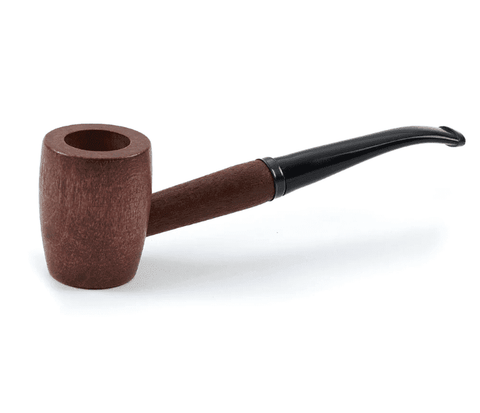Which Hardwood Pipe Should You Choose?

Hardwood pipes have been a staple of the tobacco industry for ages, and while so many aspects of the industry have gone high-tech in the last couple of decades, hardwood pipes prove that some things will never change – nor do they need to. Using high-quality wood as a vessel for rich and complex pipe tobacco offers the ultimate smoking experience, and one that needn’t be tampered with.
Hardwood pipes haven’t evolved much at all over the years, as it turns out. To this day, the same variety of wood types are used, and any avid smoker will tell you their personal preferences.
With that being said, we want to reexamine the most common types of wood that are used to produce pipes around the world, as each one really does offer its own distinctive qualities to your smoking experience. You don’t want to underestimate the role that a wood type can play in flavor and other important factors involved in enjoying your favorite tobacco blends.
What are the Different Types of Wood Used to Make Hardwood Pipes?
Generally, hardwood pipes are crafted from either cherry, pear, briar, olive, elder, maple, or white ash wood, with the last one being less common than the others. Each wood type boasts specific flavor and scent qualities, along with its own width and softness level, and this can affect everything from how your tobacco tastes to how warm the smoke is. Now, let’s look more closely at the different types of wood.
Wood Type #1: Cherry
Cherry wood is very hard and dense, with a gorgeous cherry color that catches the eye. It’s a commonly used wood for smoking meat thanks to its delicious flavor and aroma that imparts itself into your smoking experience, enhancing the tobacco itself. Cherry wood was sort of the original top-notch wood of choice for pipes before briar ended up replacing it years ago. The two are actually very similar, although cherry wood absorbs less flavor and moisture than briar.
Wood Type #2: Briar
Briar wood is the go-to wood for pipe-making, being very similar to cherry, and originating from the white heath tree that grows in Europe. Once upon a time, in order to make pipes out of briar wood, the entire tree needed to be harvested, making the wood itself far more costly, and raising eyebrows about environmental concerns. But, the industry has advanced, and now, portions of the tree can be harvested while what remains can continue to grow.
Like cherry wood, briar wood is very hard and resists heat beautifully, while having a striking appearance and a neutral aroma. A handmade briar wood pipe will be noticeably more expensive than average because debris can end up in the wood’s air pockets due to the fact that it grows underground. Remedying this is a time-consuming process, hence the added cost.
Wood Type #3: Pear
Pear wood is a good choice that’s less expensive, and it can add a bit of sweetness to your smoking sessions – although that may or may not be favorable depending on your preferences. They do run hot compared to the above two types of wood, since they retain heat particularly well, and if you’re not taking good care of them, they’re more likely to crack as well, and char.
Wood Type #4: Elder
Elder wood is soft, and that can make them hard to work with, from a pipe-makers perspective. You’re more likely to find only shafts made from elder.
Wood Type #5: Olive
Olive wood is a more affordable alternative to briar, often being about half of the cost. Whether olive pipes run hotter, or cooler is up for debate, to this day, but one thing we can say is that it offers a delectably sweet but subtle flavor to smoke that many avid enthusiasts love. The olive aroma is present while you smoke as well, in a way that’s highly favorable if you ask most tobacco lovers. Olive wood tends to make for more ornate pipes since carving into it is so easy.
Wood Type #6: Maple
Maple pipes are very hard, and not the most popular option among serious connoisseurs. Maple is great at resisting heat, but it’s prone to damage due to moisture changes, and can therefore crack sooner than later when you’re using it on a regular basis. Maple pipes simply don’t have the longevity of other types of wood.
Wood Type #7: White Ash
White ash is a very hard wood, not to mention a very flammable wood. This is why you have to focus on maintaining a cool, slow smoking session in order to enjoy its qualities properly. A lot of people say that it tastes and performs like a briar pipe.
Which Hardwood Pipe Will You Choose?
Hardwood pipes come in a surprising variety of wood types, each with its clear advantages over the others. While briar is the wood of choice nowadays, you can see that other types of wood can still provide plenty of smoking satisfaction, often at a fraction of the cost. So, with that information, we encourage you to explore the various hardwood pipes at BnB Tobacco, to see which best suits your smoking needs.
← Older Post Newer Post →
